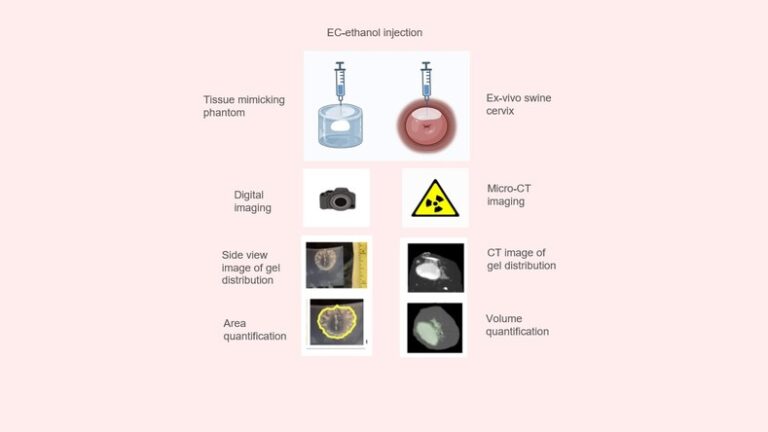Local drug delivery aims to minimize systemic toxicity by preventing off-target effects; however, injection parameters influencing depot formation of injectable gels have yet to be thoroughly studied. We explored the effects of needle characteristics, injection depth, rate, volume, and polymer concentration on gel ethanol distribution in both tissue and phantoms. The polymer ethyl cellulose (EC) was added to ethanol to form an injectable gel to ablate cervical precancer and cancer. Tissue mimicking phantoms composed of 1% agarose dissolved in deionized water were used to establish overall trends between various injection parameters and the resulting gel distribution. Additional experiments were performed in excised swine cervices with a CT-imageable injectate formulation, which enabled visualization of the distribution without tissue sectioning. Needle type and injection rate had minimal impact on gel distribution, while needle depths ≥13 mm yielded significantly larger distributions. Needle gauge and EC concentration impacted injection pressure with maximum gel distribution achieved when the pressure was 70-250 kPa. Injection volumes ≤3 mL of 6% EC-ethanol minimized fluid leakage away from the injection site. Results guided the development of a speculum-compatible hand-held injector to deliver gel ethanol into the cervix. In conclusion, needle depth, gauge, and polymer concentration are critical to consider when delivering injectable gels. This study addressed key questions related to the impact of injection-based parameters on gel distribution at a scale relevant to human applications including: 1) how best to deliver EC-ethanol into the cervix and 2) general insights about injection protocols relevant to the delivery of injectable gels in tissue.

Impact of Injection-Based Delivery Parameters on Local Distribution Volume of Ethyl-Cellulose Ethanol Gel in Tissue and Tissue Mimicking Phantoms
Sign-in or become an IEEE member to discover the full contents of the paper.
